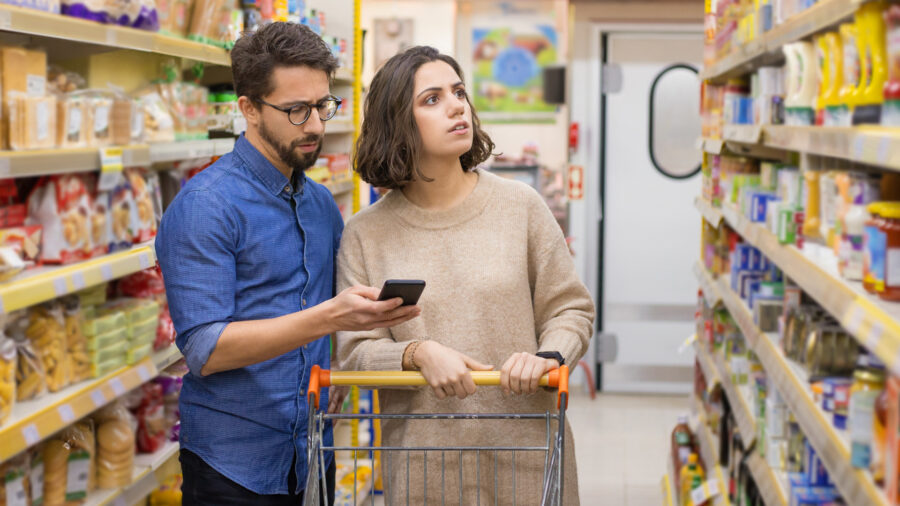Inflation is causing shoppers to rethink their buying journeys, which has made price a more important factor than ever.
That is affecting how shoppers both plan and execute their supermarket trips, and grocers must start adjusting their offerings in order to keep up with rapidly changing customer behaviors — which means going beyond standard practices to incorporate promotions and omnichannel journeys more directly into their operations.
One significant shift is that it won’t be enough to just offer Everyday Low Prices (EDLP) anymore, according to Sean Turner, CTO of Swiftly.
In the current inflationary climate, shoppers are looking for the absolute best deal and will shop around to find it, even if that means going out of their way to use a coupon at what would normally be a more expensive store. Even the most competitively-priced grocers are starting to utilize coupons to gain an additional edge in the fight against inflation.
“I think there are a couple of trends that are really going to differentiate the retailers that do the best,” said Turner. “One is that retailers are really looking for how they can best maximize the savings that they provide to the shopper. One of the things that’s really interesting around that is you look at even an EDLP provider like Walmart, which was one of the companies that everybody assumed would be the last to start offering coupon discounts and savings. But about a year ago, it announced a partnership with Ibotta, and we’ve seen them continue to invest in it and make additional capabilities available to enable shoppers to redeem discounts and cashback offers.”
APP USAGE UP
Turner also has seen an uptick in the usage of supermarket apps due to their capabilities as a convenient platform for browsing for deals and promotions.
However, he also expects inflationary pressures to lead to a renaissance for brick-and-mortar spending — Turner believes shoppers could shy away from the added cost of delivery as they weigh economization higher than convenience. Retailers can reintroduce that convenience by enabling the usage of their apps during physical visits.
“One of the key things there is really starting to think about your app as a companion to that in-store shop,” said Turner. “If you look at what Starbucks did with their app, at first people thought that there was just no way that a Starbucks app has any place in a Starbucks store. It was all about this ethos of your barista knows your name. But what Starbucks really figured out how to do was to leverage the app to help every store know your name, not just at the store you normally go through. Every store remembers your name and your drink because you’ve got that convenience built in.
“They made it a tool to help you to enjoy the store experience even more.”
In-store app usage also can tie into retail media and coupons, which can help grocers improve the profitability even as shoppers reduce their spend, according to Turner.
Enabling an app to serve as an assistant that showcases relevant deals is a big opportunity, and retail media partnerships with manufacturers can benefit both parties by enabling enticing deals that drive shoppers to stores while encouraging sales of important products.












